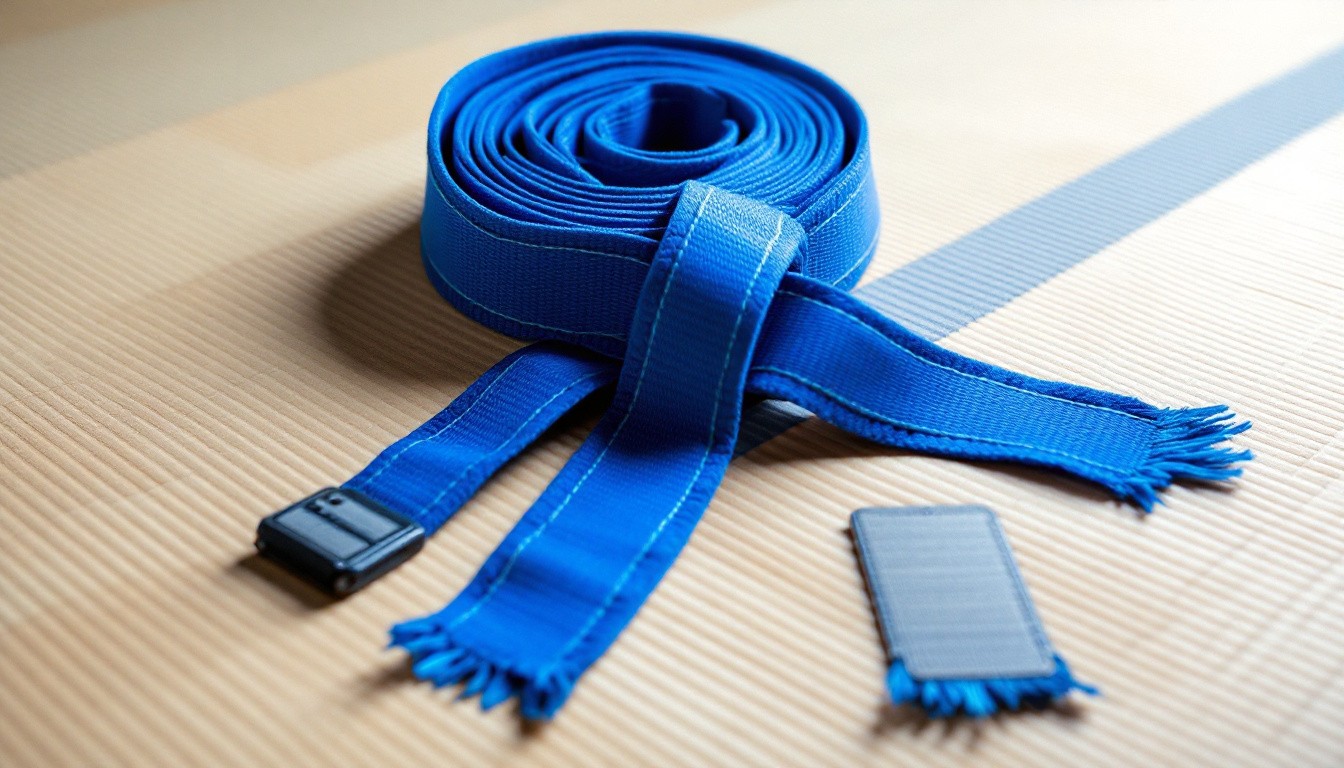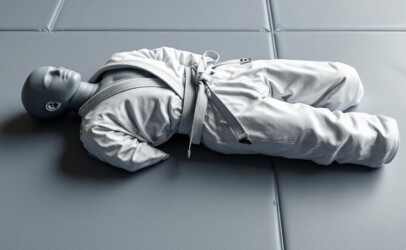At Jiu jitsu, we know that starting your journey in Brazilian Jiu-Jitsu can be both exciting and challenging. This guide will help you understand the essential skills needed for success, what to expect in your first class, and how to progress towards your blue belt in Jiu-Jitsu.
Whether you’re a complete beginner or looking to take your training to new heights, we’ve got you covered with practical tips and insights.
Mastering the Essentials of Jiu-Jitsu
Jiu-Jitsu success depends on a combination of physical prowess, mental fortitude, and technical expertise. We’ve witnessed numerous students transform their abilities by focusing on these key areas.
Building Your Physical Foundation
Physical fitness forms the bedrock of Jiu-Jitsu performance. Brazilian Jiu-Jitsu matches can be associated with maximal dynamic, isometric, and endurance strength. To improve your endurance, add high-intensity interval training (HIIT) to your routine. This can include exercises like burpees, mountain climbers, and sprawls, which mimic the explosive movements in Jiu-Jitsu.
Strength training is equally important. Focus on compound exercises like deadlifts, squats, and pull-ups to build functional strength. These movements enhance your ability to control opponents and execute techniques effectively.
Cultivating Mental Resilience
Mental toughness distinguishes good practitioners from great ones. A survey conducted by the International Journal of Sports Science found that 87% of elite BJJ athletes cited mental resilience as a key factor in their success.
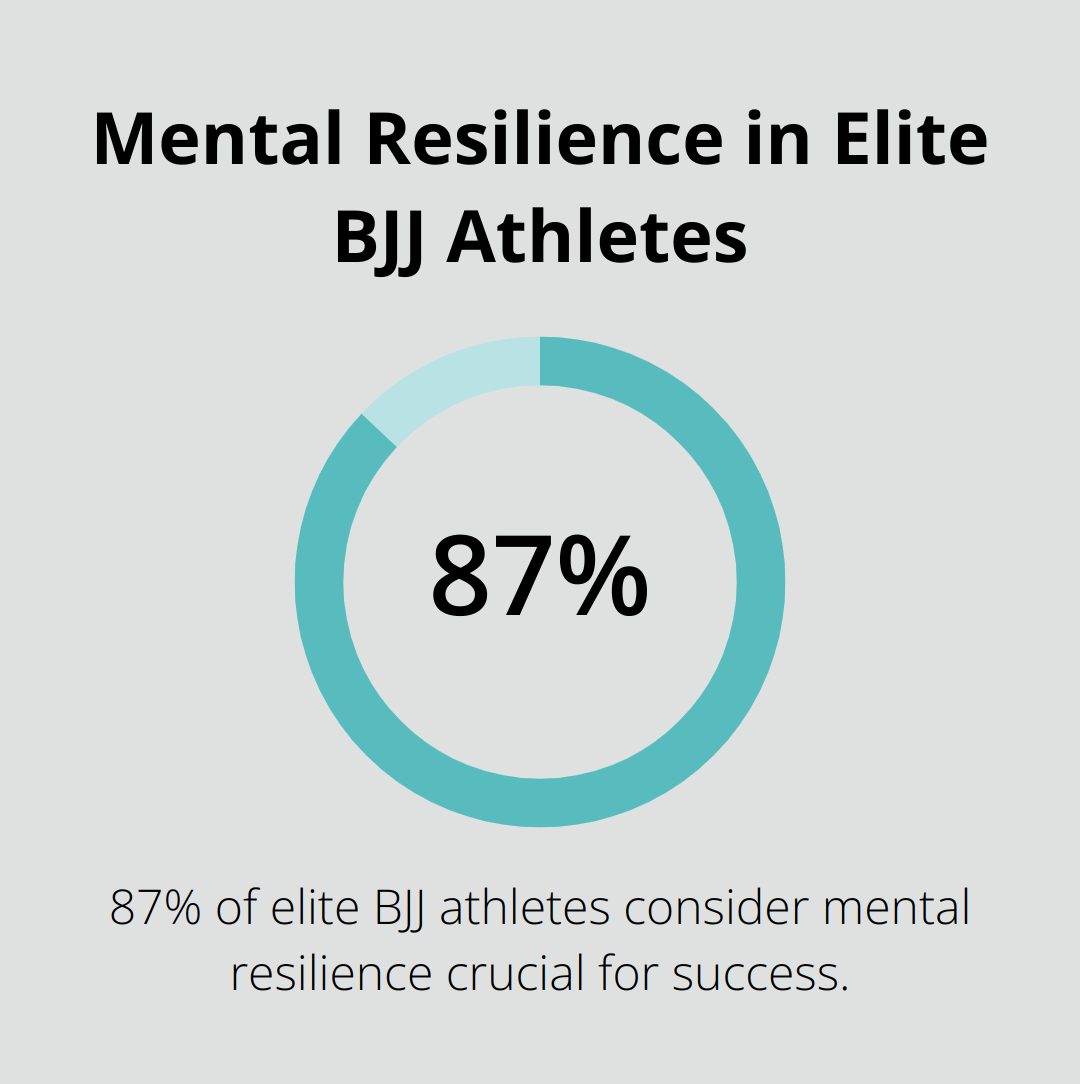
Develop your mental game by setting specific, achievable goals for each training session. This could involve perfecting a particular technique or lasting longer in sparring rounds. Celebrate these small victories to build confidence and motivation.
Meditation can also significantly improve your mental focus. A study in the Journal of Psychiatric Research showed that regular meditation practice can reduce anxiety and improve cognitive function. Start with just 5 minutes a day and gradually increase the duration.
Honing Your Technical Skills
Technical knowledge is the cornerstone of Jiu-Jitsu mastery. According to a survey by BJJ Heroes, black belts spend an average of 10 years training before reaching their rank, highlighting the importance of consistent practice.
To accelerate your learning, focus on mastering fundamental techniques before moving to advanced moves. Drill basic positions (guard passes, submissions from mount, and escapes from bad positions) until they become second nature.
Video analysis is an underutilized tool for improvement. Record your sparring sessions and review them to identify areas for improvement. This practice can help you spot mistakes and refine your technique more effectively than relying on memory alone.
As you master these essential skills, you’ll find yourself better prepared for your first Jiu-Jitsu class. Let’s explore what you can expect when you step onto the mat for the first time.
Your First Jiu-Jitsu Class: What to Expect
Stepping onto the mat for your first Jiu-Jitsu class can intimidate, but understanding what to expect will help you feel more prepared and confident. Many academies design their classes to ease newcomers into the world of Jiu-Jitsu.
Warm-Up and Conditioning
Your class will typically start with a thorough warm-up session. This isn’t just about getting your blood flowing; it plays a vital role in injury prevention and performance enhancement. You can expect a combination of dynamic stretches, light cardio, and Jiu-Jitsu-specific movements.
A study published in the Journal of Strength and Conditioning Research found that sport-specific warm-ups improved performance by up to 17% compared to general warm-ups. Warm-ups often include exercises like shrimping, bear crawls, and forward rolls – movements that directly translate to Jiu-Jitsu techniques.
Fundamental Techniques
After the warm-up, your instructor will introduce fundamental Jiu-Jitsu techniques. These might include basic positions like the guard, mount, and side control, as well as simple submissions and escapes. Don’t worry about memorizing everything; try to understand the principles behind each move.
According to a survey by BJJ Heroes, 92% of black belts emphasize the importance of mastering fundamentals before moving on to advanced techniques. Many academies (including Souza Grappling Co.) dedicate ample time to these crucial basics, ensuring a solid foundation for your Jiu-Jitsu journey.
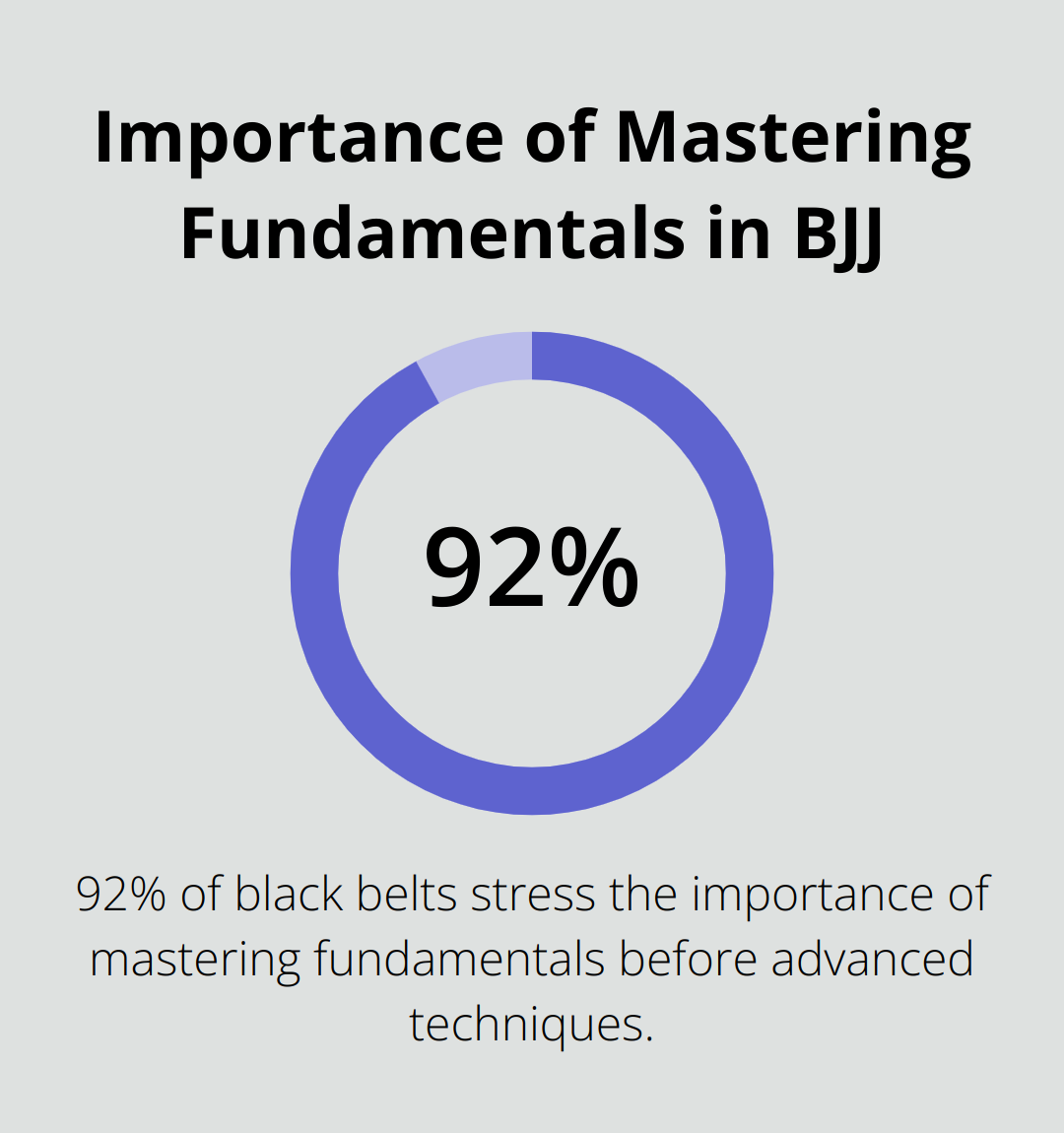
Partner Work and Drilling
You will pair up with a training partner for much of the class. You’ll practice the techniques demonstrated by the instructor, taking turns being the “attacker” and “defender.” This hands-on approach is essential for ingraining the movements into your muscle memory.
A study in the Journal of Motor Behavior found that alternating between roles during practice led to better skill retention compared to practicing only one role. Many instructors encourage students to work with different partners throughout the class to experience various body types and energy levels.
Your first class won’t typically involve full-intensity sparring. Instead, you might engage in positional sparring or flow rolling, where the goal is to practice techniques with light resistance. This allows you to apply what you’ve learned in a controlled, safe environment.
As you progress through your Jiu-Jitsu journey, you’ll find each class building on the last, gradually expanding your skillset and understanding of this complex martial art. The key is consistency and patience. With regular attendance and dedicated practice, you’ll be surprised at how quickly you improve. Now, let’s explore how to take your Jiu-Jitsu journey to the next level.
Elevating Your Jiu-Jitsu Game
Maximize Your Mat Time
Consistency propels Jiu-Jitsu progress. A recent study covered 27 BJJ athletes with an average age of 25.36 years, height of 175.04 cm, and weight of 76.56 kg. To optimize your training:
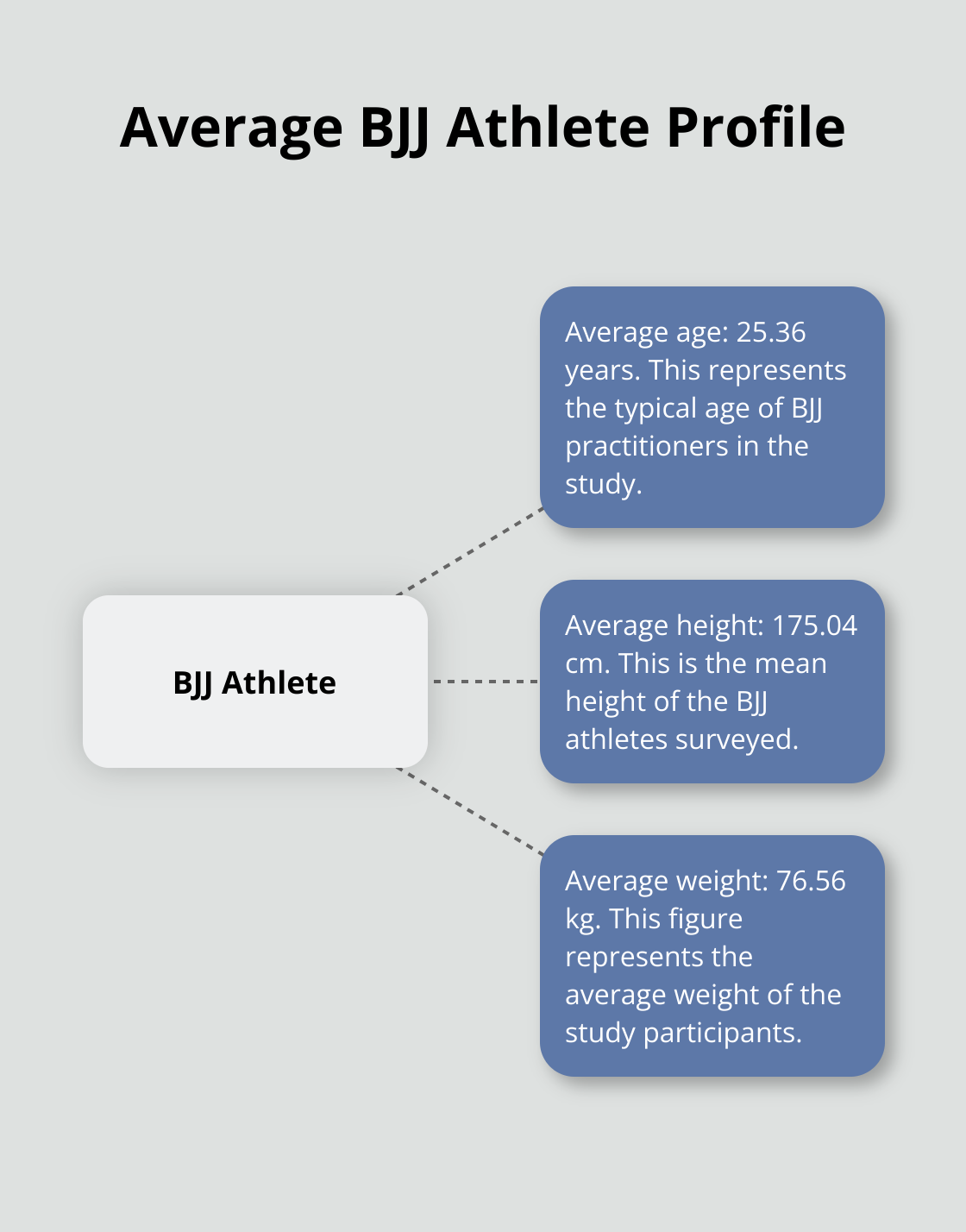
- Establish a regular schedule. Treat your Jiu-Jitsu sessions as non-negotiable appointments.
- Use a training journal to monitor your progress. Record learned techniques, areas for improvement, and achievements.
- Incorporate active recovery days. Light drilling or yoga can maintain flexibility and prevent burnout.
Embrace the Competition Mindset
Competitions test your skills under pressure. The IBJJF (International Brazilian Jiu-Jitsu Federation) reports that competitors often experience accelerated growth in their Jiu-Jitsu journey. To prepare for your first tournament:
- Start with in-house competitions at your academy.
- Perfect 2-3 go-to techniques from each position.
- Simulate competition scenarios during training to acclimate to pressure.
The goal of competing isn’t always to win (although that’s nice), but to learn and grow. Many black belts credit their early competition experiences as essential to their development.
Explore Advanced Techniques
Advanced techniques can add new dimensions to your game. However, a solid foundation is essential.
To effectively incorporate advanced techniques:
- Attend seminars with high-level practitioners to gain exposure to new concepts.
- Study instructional videos, but always practice with a partner to ensure proper execution.
- Develop a “laboratory” mindset during open mat sessions, where you can safely experiment with new moves.
Seek Continuous Feedback
Regular feedback accelerates improvement. Try to:
- Ask your instructor for specific pointers after class.
- Record your sparring sessions (with permission) and review them later.
- Participate in open discussions with training partners about techniques and strategies.
This approach helps identify blind spots and refine your techniques more effectively.
Diversify Your Training Partners
Training with various partners exposes you to different body types, strengths, and styles. This diversity challenges you to adapt your techniques and problem-solving skills. Make an effort to:
- Rotate partners during class drills.
- Attend open mat sessions to roll with practitioners from other academies.
- Seek out higher belts for guidance and lower belts to refine your fundamentals.
Final Thoughts
Jiu-Jitsu offers a unique blend of physical challenge, mental growth, and technical mastery. Your first class marks the beginning of an exciting journey towards your blue belt in Jiu-Jitsu. Consistent training, competition experience, and exploration of advanced techniques will propel you forward on this path.
At Souza Grappling Co., we support you every step of the way. Our 3,000 sq. ft. facility provides an ideal environment for your Jiu-Jitsu journey (with classes for all skill levels). Expert trainers and a supportive community await you, whether you aim to improve fitness, learn self-defense, or compete at a high level.
We invite you to join our vibrant Jiu-Jitsu community and experience the transformative power of this martial art. Take advantage of our complimentary three-day pass and discover why many have found their passion for Jiu-Jitsu with us. Your Jiu-Jitsu journey is a lifelong adventure of learning, growth, and self-discovery.

